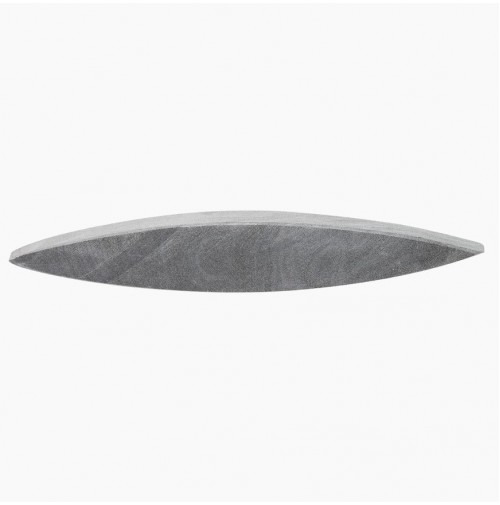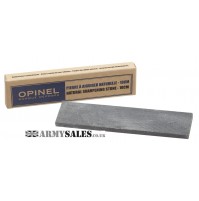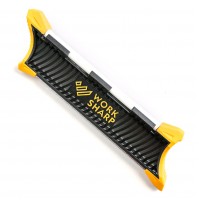OPINEL NATURAL SHARPENING STONE 24CM FROM LOMBARDIA ITALY
- Brand: Opinel
- Product Code: OPINEL NATURAL SHARPENING STONE 24CM
- Availability: 6
- £24.99
- Ex Tax: £20.83
Natural stone from Lombardy, 24 cm. To use wet, with a 20 degrees angle with the blade.
The origins of the sharpening stone
Stones were the original tools of knife sharpeners. In fact, they were the first sharpening tools ever to be used. Originally, peasants used stones to sharpen their scythes before cutting hay, running the stones along the blade. Although the technique has evolved somewhat over time, stones continue to be one of the most widely used tools for sharpening knives.
Where do sharpening stones come from? Most sharpening stones are natural elements extracted from quarries. They are often made of sandstone or shale.
Sharpening stones are distinguished by their particles. Some have coarse particles which are suitable for sharpening extremely damaged knives, while others have finer particles that let you sharpen any type of knife by spending more time on those that need it.
Our sharpening stones come from the Lombardy region of Italy and are composed of fine particles. Lombardy stone is known for its outstanding quality: its particles are spread out evenly across its entire surface, and it does not contain any veins which might interfere with the sharpening.
Are sharpening stones suitable for all knives?
Stones can be used to sharpen any type of knife, with the exception of knives with micro-serrated edges (e.g., serrated and bread knives). Pocket knives, kitchen knives, table knives, garden knives (such as pruning shears), and even scissors can be sharpened with a stone. The same goes for knives with a rounded tip: simply glide the curved edge along the stone.
However, special care must be taken with polished and black blades, as these blades are more easily damaged during sharpening. The knife should always be held at a 20-degree angle against the stone.
How to use your sharpening stone
First of all, keep in mind that your knives should be sharpened regularly. Professionals sharpen their knives before nearly every use.
The first step involves soaking the stone in water for a few minutes until it is nice and drenched. The sharpening stone must be wet to prevent stone dust and steel particles from clogging up its pores. Once the stone is drenched, you can then proceed with the sharpening. Hold the knife at a 20-degree angle against the stone to prevent the blade or cutting edge from becoming damaged. To create a 20-degree angle, place your thumb on the back of the blade, then place the knife against the stone.
To sharpen, press gently and push the knife away from you, gliding the entire length of the cutting edge against the stone. If you sharpen your knives regularly, then 5 glides will be enough. Next, turn the knife over and repeat, this time placing your index finger on the back of the blade to create a 20-degree angle. If the stone gets dry, feel free to wet it again.
While sharpening, you may notice that small white marks appear on the blade. This is sediment from the stone. Be sure to clean the knife after sharpening by rinsing it with water or wiping it with a cloth.
How to clean your sharpening stone
Sharpening stones are extremely easy to clean. After each use, simply rinse the stone with water. This will remove the stone dust and steel particles and prevent the pores from clogging. Let the stone dry, then store it in a drawer (for example). Do not wash the stone in the dishwasher or use soap, a sponge, or detergent - water is enough.
Sharpening stones are incredibly durable and have an extremely long lifespan. However, they can break easily so be careful not to drop them
Tags: Knife, knives, blade, sharpener, stone, wet stone, bushcraft, tool






